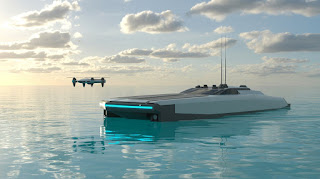As the maritime world embraces smarter technologies, Unmanned Surface Vehicles (USVs) are quickly becoming vital assets across defense, commercial, and environmental sectors. These crewless vessels are capable of performing a wide range of missions—from coastal surveillance to offshore infrastructure inspection—more safely and efficiently than traditional manned ships.
According to recent market projections, the global USV market is set to grow from USD 0.82 billion in 2025 to USD 1.59 billion by 2030, achieving a compound annual growth rate of 14.1%. This rapid expansion reflects growing confidence in the operational and economic value of USVs worldwide.
Download PDF Brochure @
https://www.marketsandmarkets.com/pdfdownloadNew.asp?id=220162588
The Core Benefits Fueling Growth
1. Risk Reduction in High-Stakes Environments
USVs are designed to operate in hazardous areas where human presence is either unsafe or inefficient. In defense, they are used for mine detection, surveillance, and anti-submarine warfare, allowing armed forces to maintain awareness and control without placing lives at risk.
2. Cost-Efficient Offshore Monitoring
In the oil & gas industry, USVs are revolutionizing how companies inspect underwater infrastructure. They enable automated pipeline inspections, leak detection, and routine monitoring of offshore rigs, significantly reducing the need for expensive manned operations and dive teams.
3. Enhanced Capabilities for Environmental Research
USVs play a crucial role in marine science and environmental monitoring. Equipped with advanced sensors, they collect data on water quality, ocean temperatures, marine life, and pollution levels—providing researchers with continuous, real-time information across wide oceanic areas.
Key Technology Drivers
Single Hull: Performance-First Design
The single hull configuration is emerging as the fastest-growing design segment. Its streamlined structure reduces drag, boosts speed, and improves fuel efficiency. Ideal for missions requiring rapid response, this design is becoming a go-to choice for agile, long-range operations.
Payload Systems: Driving Mission Diversity
Payload systems are at the heart of a USV’s versatility. These modular setups support sonar, radar, cameras, environmental sensors, and communications gear. Operators can quickly swap or upgrade payloads based on the mission, offering long-term flexibility without new capital investment.
Regional Spotlight: North America's Leadership
North America, particularly the United States, is at the forefront of USV innovation. The region benefits from robust defense budgets, high commercial demand, and well-funded research initiatives. US-based companies have secured contracts for naval operations, environmental assessments, and offshore industry support.
Collaborations between manufacturers and research institutions enable rapid prototyping and deployment, while public sector investment fuels continuous R&D in autonomy, endurance, and artificial intelligence. The commercial sector, including oil and gas operators, continues to adopt USVs for safer, cost-effective offshore activities.
Ask for Sample Report @
https://www.marketsandmarkets.com/requestsampleNew.asp?id=220162588
Key Market Players
Some of the most influential companies shaping this market include
L3Harris Technologies, Teledyne Technologies, Textron, Saildrone, MARTAC, Elbit Systems, Exail Technologies, Thales, KONGSBERG, BAE Systems, SEA-KIT International, and ATLAS ELEKTRONIK. Their global presence and strong innovation pipelines allow them to serve multiple sectors with customized, high-performance platforms.
The growth of the Unmanned Surface Vehicles market marks a pivotal moment in maritime operations. From national defense to climate research and energy production, USVs are offering faster, safer, and more cost-effective solutions for navigating and understanding our oceans.

Comments
Post a Comment